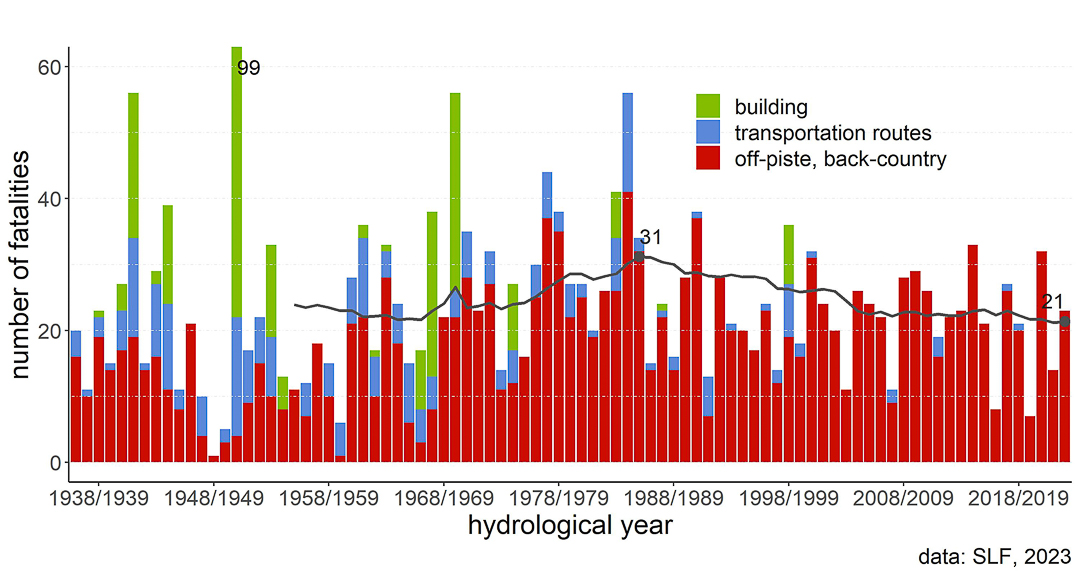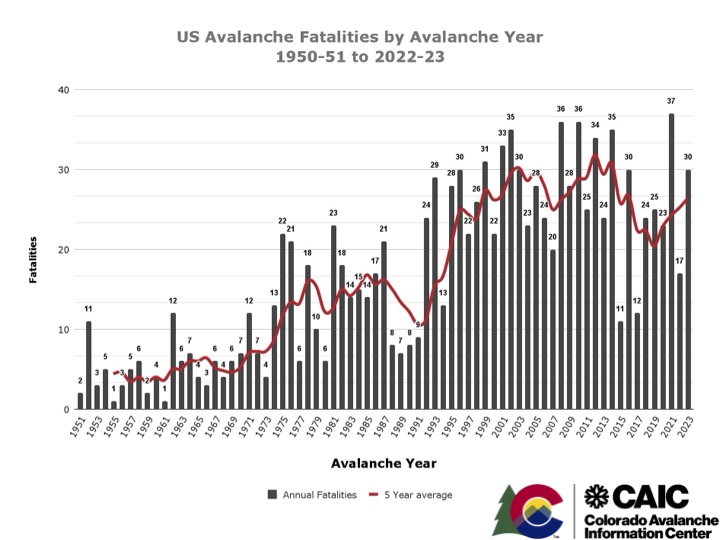As a species, we generally like stats. The numbers game can reveal underlying trends. It can also lead you astray into thinking the numbers somehow present a greater truth. A recent article in Outside Online posed a good question with, understandably, an insufficient answer. “Avalanches Caught 117 People in Colorado in 2024. Why Did Only Two Die?” reads the headline.
The editors/author did their job—the title grabbed my interest. However, as can be expected, there’s no miracle anecdote, no pixie dust sprinkled, clearly pinpointing why there were two deaths when 117 people were caught in slides. Last season, according to the Colorado Avalanche Information Center (CAIC), there were 122 people caught in slides, with 11 killed.
You can see where we are going. Eleven deaths down to two is significant. But, as is clarified in the Outside piece, the reduction in fatalities does not necessarily mean, as a community, we are making better decisions, using safety equipment more effectively, or simply avoiding hazardous terrain when the local forecast calls for it.
The Outside story got me thinking about how other countries compare the number of backcountry users caught in avalanches relative to the number of deaths.
Switzerland’s SLF (Swiss Institute for Snow and Avalanche Research) reports the following data for the 2023-2024 season:
- 168 avalanche accidents
- 235 people caught
- 17 people killed
- All but two of the reported incidents are labeled as 1 or 2 for “activity and location”: 1 indicates “Backcountry touring (e.g., snow-shoeing, mountaineering),” 2 Off-piste skiing and snowboarding (generally accessed from a ski area).
- Broken down one last step for Swiss avalanche fatalities: Backcountry: 8 / Off-piste: 7
Switzerland Reports the following data for the 2022-2023 season:
- 144 avalanche accidents
- 230 people caught
- 22 people killed
- All but four of the reported incidents are labeled as 1 or 2 for “activity and location”: 1 indicates “Backcountry touring (e.g., snow-shoeing, mountaineering),” 2 Off-piste skiing and snowboarding (generally accessed from a ski area).
- In a slightly different dataset used for this information, 29 incidents are categorized as “off-piste,” with 112 labeled as “tour.”
According to data collected by the SLF, the average number of avalanche fatalities per year is 24 individuals. Since roughly 1985 in Switzerland, the general trend has seen a relative decrease in annual fatalities. The decline’s causes are difficult to pin down. However, since the mid-80s, transceiver technology has become more refined, avalanche education more professionalized, and forecasting products are more readily available.

Avalanche fatalities in Switzerland since 1936/37. The graph illustrates the fall in the number of fatalities in buildings and on transportation routes. The black line shows the 20-years mean values. Its maximal value is 31 and its actual value 21. The long-year mean value since 1936/37 (86 years) is 24. Data/Bar Chart SLF
Back here in the U.S., the trend for avalanche fatalities since the early 90s trends upwards, with a steep bump between 1991 and 2004. Contrary to what we find this season in Colorado, with two deaths overall in the U.S., the data for the early 2020s suggest a negative trend: an increase in avalanche fatalities. (We are not seeing data from the entire U.S. illustrating how many avalanches occurred, the number of individuals caught, and the resulting fatalities. This information might tell a story of fewer fatalities despite potentially more incidents and individuals caught.)

